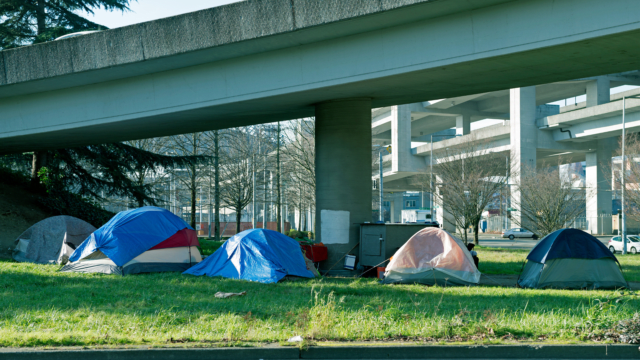
Source: Posted in the St. Catharines Standard on Jan. 2nd 2025 by Allan Benner.
While data is still being analyzed to determine the number of people experiencing homelessness in Niagara, a preliminary report shows more people here are remaining homeless longer.
The report by Niagara Region homelessness services manager Jeffrey Sinclair, to be presented during next week’s public heath and social services committee meeting, said the minimum number of people identified as experiencing homelessness is still “under analysis,” after the municipality’s most recent point-in-time count was conducted on Oct. 22.
The report said 460 surveys that were completed that day showed 61 per cent of respondents had been homeless for at least six months.
Sinclair called it a “significant increase” in the number of chronically homeless people in the region, compared to the previous point-in-time count on March 23, 2021, when 42 per cent of respondents were identified as chronically homeless.
That year, 439 surveys were completed, but at least 665 people were identified staying in homeless shelters or on the streets.
“This increase highlights the growing need for long-term solutions and intensive support for individuals with higher acuity and complex needs,” Sinclair wrote in his report.
The number of survey respondents reporting health-related issues also increased over 2021, with top concerns including substance use, acquired brain injuries, physical disabilities and mental health.
“This trend underscores the need for specialized health and social services to address the complex needs (or higher acuity) of the population experiencing homelessness,” Sinclair wrote.
The survey did show fewer young people among the region’s homeless population, with eight per cent of respondents younger than 24, down from 10 per cent in 2021.
“Early intervention remains critical, as 28 per cent of respondents reported experiencing homelessness for the first time before adulthood, an increase by 16.7 per cent compared to 2021,” the report said.
The number of homeless seniors has increased by 19.6 per cent since 2021, indicating a need for specialized housing and support for older adults.
More culturally sensitive, community-driven housing programs are also needed for Indigenous people, who accounted for 28 per cent of the unhoused population.
The report said increased rent subsidies and affordable housing initiatives, as well as stronger eviction prevention strategies, are needed.
Although Start Me Up Niagara executive director Laura Dumas said her organization was not involved in the latest count, she expects there will be a significant increase among the number of unhoused people in Niagara when the analysis is complete.
She said staff at the St. Catharines-based social service agency “see new faces all the time.”
“Over Christmas, I was driving along the QEW near Fourth Avenue, and I counted 12 tents up on the hill,” she said. “And it has been so cold.”
While Start Me Up Niagara will give individuals living there “what we can to make sure they stay warm,” she said many of them are “extremely resilient” in finding ways to endure cold weather without adequate shelter.
The Oct. 22 point-in-time count was conducted by 81 community volunteers and 65 staff from 24 social service agencies, with events held by the RAFT and Niagara Regional Native Centre to gather more homeless people from throughout the community to help ensure the count included youth and Indigenous populations.
Point-in-time counts are a provincial and federal government requirement, to provide a snapshot of homelessness at a single point in time.
While municipalities are supposed to conduct the studies every two years, it had been delayed in Niagara due to the COVID-19 pandemic.
A full report on the point-in-time count is expected to be presented in March or April.
